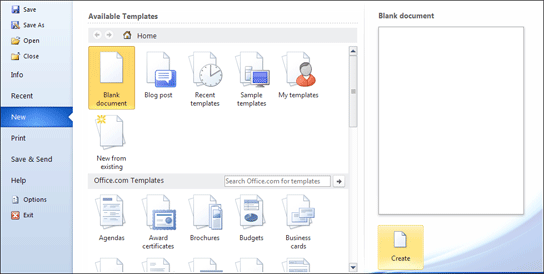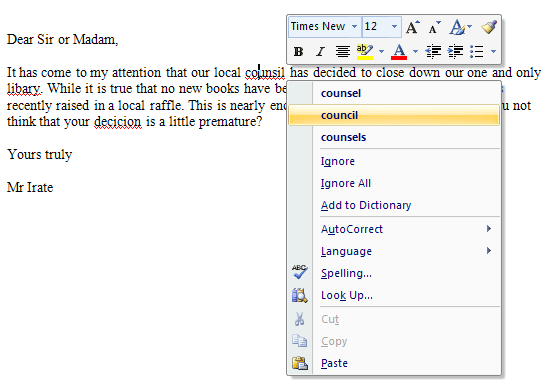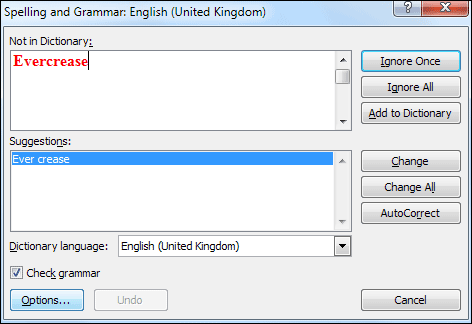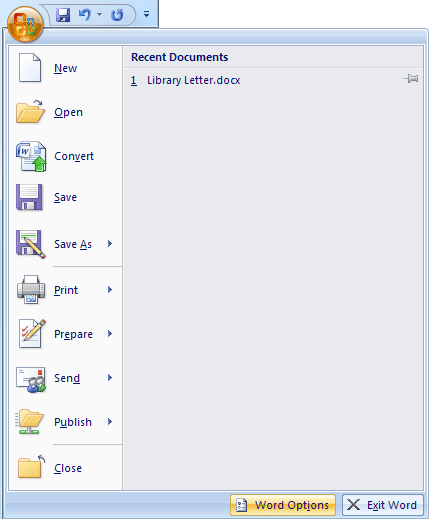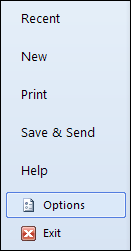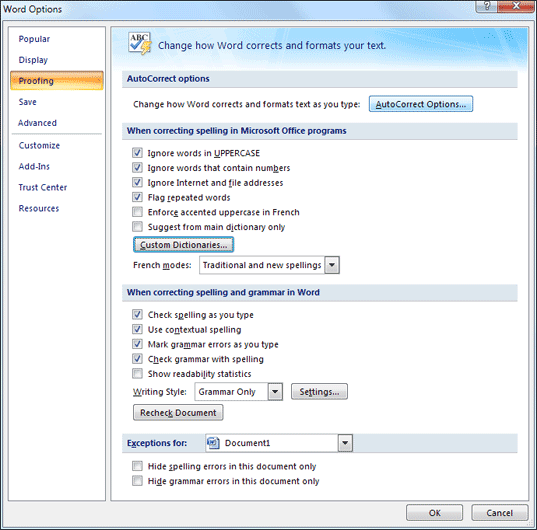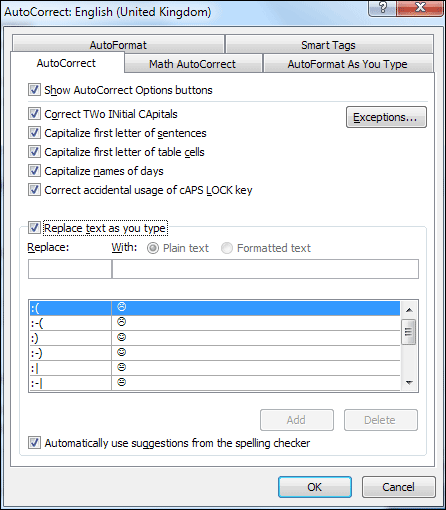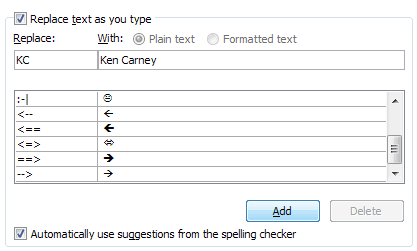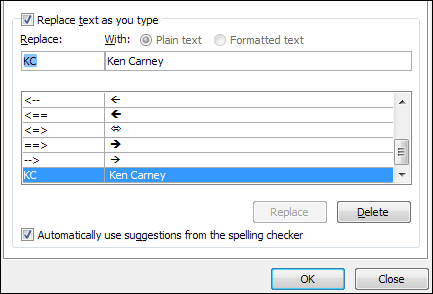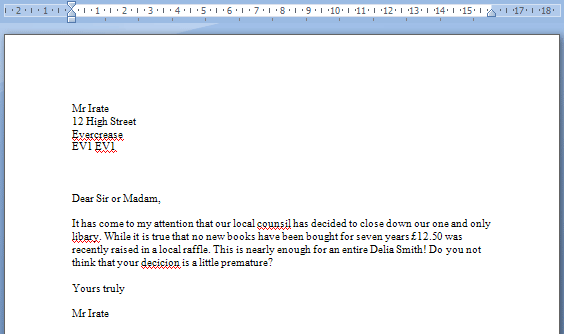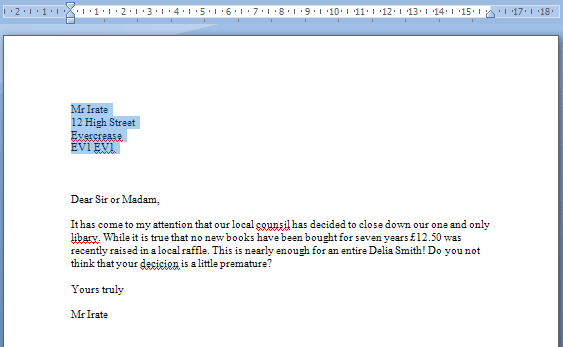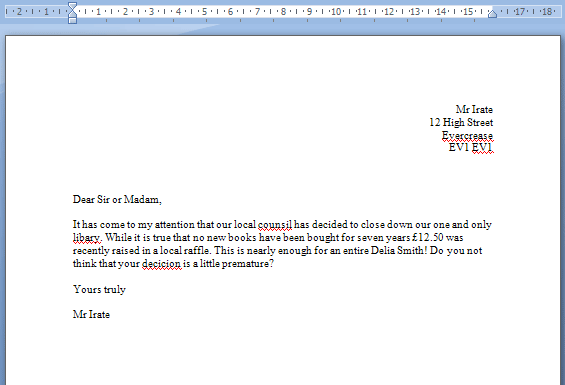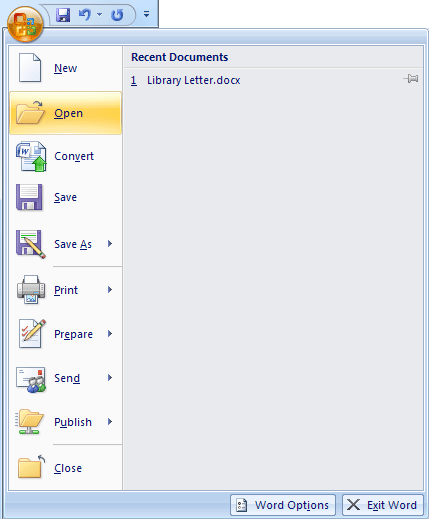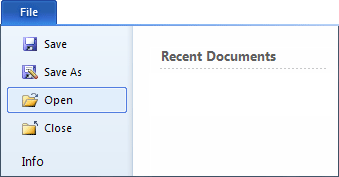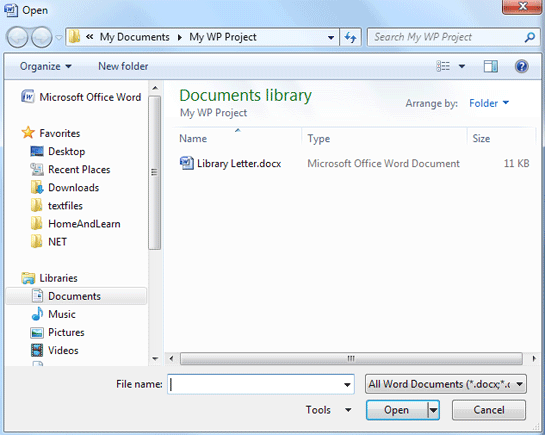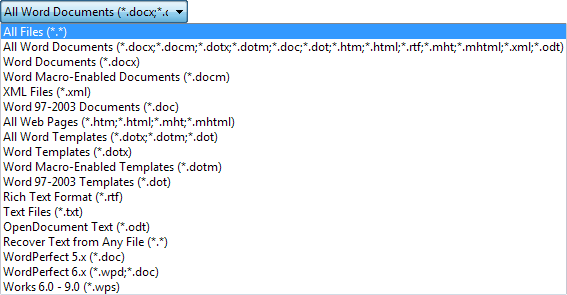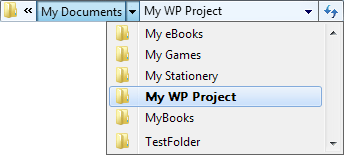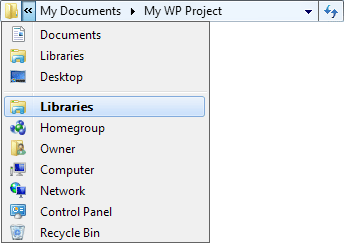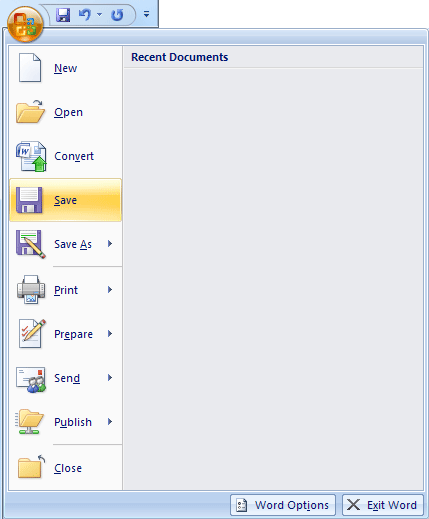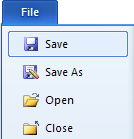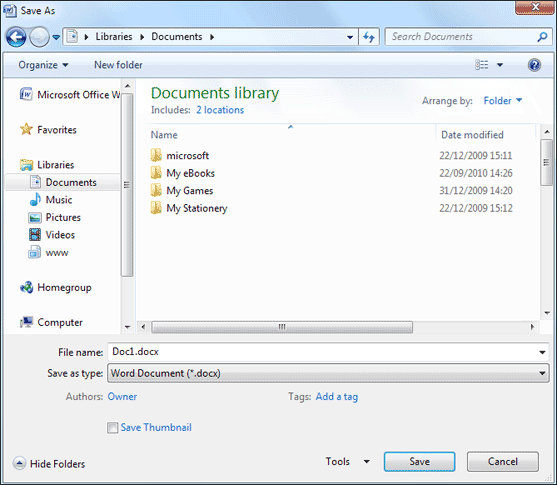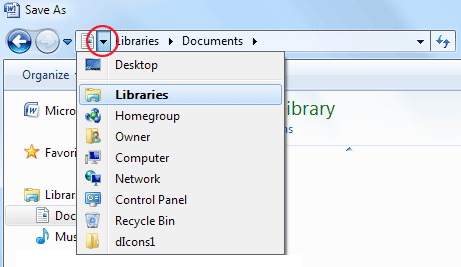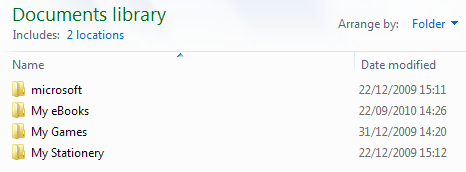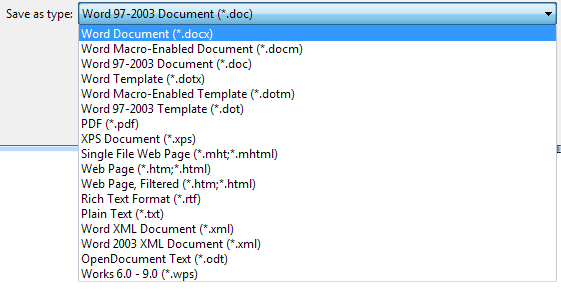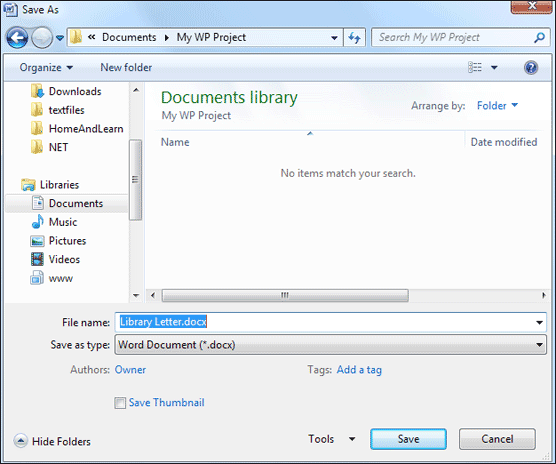Lesson:04(Microsoft Word 2007 to 2013)
To save your work in Word 2007, click the round Office button in the
top left of your screen. You should see a menu appear:
In Word 2010, click the File tab at the top of
Word:
For Word 2013 users, click the File tab as well. Your document
will disappear when you click File and you'll see this screen:
Click on Save from the menu on the left. (The area on the right shows
you information about the your document.)
When you click Save in Word 2013, the area on the right will
change to this:
Under Save As heading in Word 2013, you'll see three options:
SkyDrive, Computer, and Add a Place. The first
option is SkyDrive. This saves it to servers operated and controlled
by Microsoft. This is very useful if you want to work on your Excel
document from other locations. For example, you may be working on a
document in your office. Saving it to SkyDrive means you'll also be
able to open it when you get home from work. When you click the SkyDrive
option you'll be able to Sign In, Sign Up, or simply Learn More. We'll
be saving to the Computer, though, so click this option. Then
click the Browse option:
In all versions of Word, when you click the Save
item (or Save then Browse) you'll see a dialogue box appear:
There are three main areas to the Save dialogue box: Where
do you want to save your document? What do you want to call it? What
type of document do you want to save it as?
We'll take the three areas in turn, starting with "Where do you
want to save your document?"
The "Where" is set right at the top. The default location
is in the Documents folder on your computer. You can see where
this is by clicking the arrow in the top left:
The dropdown menu is a list of locations on your computer.
The image above is from Windows 7 and shows that we are in the Libraries
folder. If you have Windows Vista, you won't see a Libraries entry.
It will say Users. There will then be another one next to Users
that has the user name you used when setting up your computer. For example:
Users > Kenny > Documents.
Inside the Libraries folder is another one called Documents.
We're saving it to this folder. The larger area of the Save As dialogue
box shows you the folders that are already in the Documents folder:
You can create folders of your own to hold your work.
So click the New Folder button at the top:
You should see a new yellow folder appear in the main
area of the Save As dialogue box, with some blue highlighting:
The blue highlighting means that it is ready to be typed
over. Type the name My WP Projects. Then press the enter key
on your keyboard (or just click away). The folder will then be renamed:
If you get it wrong, click back onto the folder. Now click
again, and you should see the same blue highlighting. Or just right
click the folder to see a new menu appear. Select Rename from
the menu.
Now that you have created a new folder, double click the folder name
to move inside of it. Notice the location area at the top:
The name of our folder has been added to the right of
Documents, indicating that this new folder is inside of the Documents
folder. In other words, there is a folder called Libraries, and
inside of that another one called Documents. The folder we have
created, the My WP Projects one, is inside of the Documents folder.
File Names
We now need to come up with a name for this particular document that
we're saving. If you have a look at the bottom of the Save As
dialogue box you'll see two areas: one called File Name, and
the other called Save as Type. The File Name area is where you
type a name for your document. The Save as Type means which type of
document is will be. Microsoft Word documents from 2007 onwards end
with the letters docx. Previously, the letters where just doc.
If you sent someone a Word document with the ending docx, somebody
with version 2003 of the software would not be able to open your file.
Simply because previous Office versions don't know how to handle the
newer format. The reverse is not true, though: they could send you a
file that ended with the letters doc and you would be able to
open it up in Word 2007 or Word 2010/13.
Microsoft Word allows you to save documents in a wide range of different
formats. Click anywhere inside of the Save as Type area to see a list
of the different formats:
The image shows that we have Word 97 - 2003 Document in the
Save as Type area. The three letter extension shows .doc. The
first one on the list, however, is Word Document .docx, which
is the one we want. Make sure this one is selected in your Save As dialogue
box.
Now have a look at the File Name area. It should say
Doc1.docx.
(It might just say Doc1, however, if you haven't enabled file extensions
on your computer. If you can't see any file extensions, do the tutorial
here on our site:
Enable File
Extensions.) If your File Name area does not say Doc1, it may just
display the first line of text from your document.
If you clicked the Save button now, your file will be called
"Doc1" (or whatever you have in the File Name area). That's
not a very descriptive name for a document, so we'll change it to something
else. To give your document a different name, simply click inside the
File Name text box. Delete everything in the text box. Type in a new
name, something like Library Letter.
Your Save As dialogue box should now look like the one below. When
it does, click the Save button:
You have now saved your work to your hard drive. Word 2007 and Word
2010 users will be returned to the main document area, with the letter
displayed. Word 2013 users, however, will stay on the same screen. To
get back to your letter, click the white arrow in the white circle top
left of your screen:
To prove that your document has indeed been saved, click the round
Office button in the top left, or the File tab in Word 2010/13. Select
Save As. (Word 2013 users will need to click the Browse button
again from the right hand side.) When the Save As dialogue box appears,
you should see the name of your file in the big white area:
Click the Cancel button to get rid of the Save As dialogue box.
You can continue to work on a document that has been saved. But if
you add more lines to your letter, or make any changes, you need to
keep saving your changes on regular basis. You don't have to use Save
As any more. You can just click the Office button or the File tab, then
click on Save. Or click on the Save icon at the top of the screen,
highlighted in the image below. This will update your document.
Word 2007
Word 2010/13
A shortcut for saving your work is to hold down the CTRL key on your
keyboard. Keep it held down and then press the letter S.
Remember to save your work on a regular basis. It's not a pleasant
experience to have worked on a document for some time only for your
computer to break down. When you finally get your computer to work again,
if you haven't saved regularly you'll find all that hard work lost forever,
with no way to get it back!
OK, now that you know how to save a Microsoft Word document, let's
move on. The next section will be about highlighting text.

